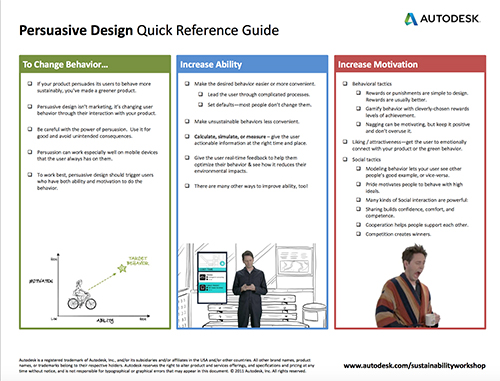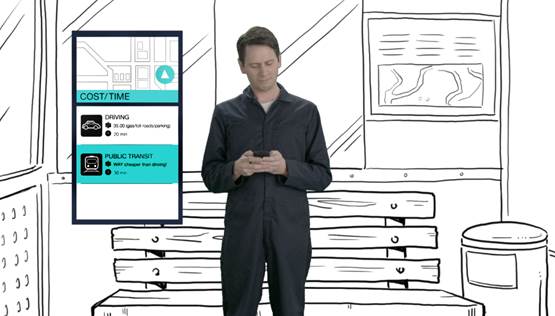You are here
Persuasive Design
Whether you are an industrial or interaction designer making products, or user experience designer making services, explore ways in which you can reduce environmental impacts by designing your product's interface to actually change your user’s behavior through interaction. Watch this short series of videos to learn how persuasive design can increase both people’s ability and motivation to act more sustainably.
Transportation is one example of how you can persuade a person to have green behavior. A mapping app, for instance, might encourage greener behavior by suggesting public transportation or bike routes. This is an example of designing one small piece of a widely-used product (a mobile phone) to have an effect on many people. Alternatively, you can design a product that is only used by one specific audience, but exists entirely to help them change their behavior.
Persuasive design is most effective when you can give your user both the ability and motivation to do the behavior you are seeking. According to researcher BJ Fogg, when both of these are high, your product's interaction with the user can trigger the target behavior. Of course, you should only use the power of persuasive design for good, and be careful to avoid unintended consequences. Persuasive design's goal is not to manipulate people, but to help them align their behavior with their values.

|
| Our one page quick reference guide on Persuasive Design will give you a useful list of things to consider. |
Watch the following videos to learn more about how you can give your users more ability and motivation to live more sustainable lives.
| Attachment | Size |
|---|---|
| 1.02 MB | |
| 293.91 KB | |
| 133.68 MB |
Links and References
Comments


